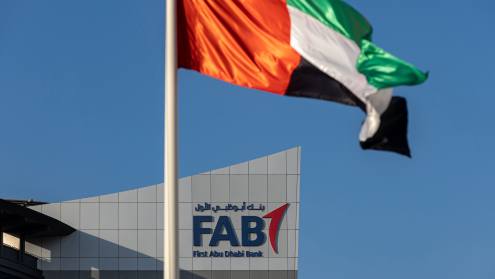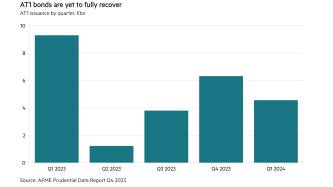The disturbing but frank opinion of European banking insiders involved in a decade-old political vision to create a Single European Payments Area (SEPA) is that it is a complete mess. At a time when an exit from the euro for some countries seems more and more probable, this long-standing ideal of a common payments market is fast approaching its deadline: the first for the eurozone is in February 2014, and another in late 2016 for all EU states, as well as Iceland, Liechtenstein, Norway, Switzerland and Monaco.
Editor's choice
Progress in migration to date has been somewhat disappointing. Today, only 30% of credit transfers and a meagre 1% of direct debit transactions are SEPA compliant, although the schemes have been live for five and four years, respectively. Industry participants put this down to low or no demand for cross-border retail payments, and also lax self-governance. This prompted the European Commission (EC) earlier this year to set the deadline.
But technical requirements remain ambiguous and there is no real executive power to guide implementation, according to Marc Pomes Bordedebat, the senior manager for payments markets and banking initiatives for Europe, the Middle East and Africa (EMEA) at the Society for Worldwide Interbank Financial Telecommunication (Swift) and other experts.
Lack of regulatory guidance
With such little time to achieve an overhaul of payments systems in 32 countries, it is still unclear how SEPA will work practically by 2014. This lack of executive power puts corporates and even banks in limbo, the experts say, as the regulation and standards are so flexible that finding technical harmony in such a short time has become an onerous task.
For one, there is confusion between the SEPA rulebooks by the European Payments Council (EPC) and the SEPA directive by the EC. The EPC, an industry body set up by the EC, created the rulebooks on SEPA Direct Debits (SDDs) and SEPA Credit Transfers (SCTs). These are the two core schemes, based on a subset of the 10,000-plus fields in the ISO 20022 messaging standard framework. But the EPC cannot legally force banks to apply them.
That is down to the EC. Yet critics say the EC made a mistake in the phrasing of the SEPA regulation: instead of referring to a standard that is based on the ISO 20022 (like the SCT and SDD), it referred to the ISO 20022 framework. “This makes the regulation difficult to understand and enforce,” says Ruth Wandhöfer, Citi’s head of market policy and payment strategy for global transaction services in EMEA.
The ISO 20022 is in fact the scaffold on which a message is built and is based on extensible mark-up language, better known as XML, which creates the rules to decode electronic messages.
Mr Pomes Bordedebat has a more balanced view. “There is very little guidance on the corporate-to-bank side. The EPC does not have ambitions in this space, which remains competitive. The EC seems to be of the opinion that competition ultimately lowers price levels and opens the door for competing ISO 20022-based standards, which explains its definition of ‘essential requirements’ versus mandating a single ISO 20022 technical standard. This was a serious point for discussion. National banking associations have been addressing this issue,” he says.
Inconsistent ideas
There is another inconsistency between the EPC rules and the EC directive. The EPC’s rules apply to payment service providers directly, for example, banks. The EC regulation, on the other hand, demands corporates use the ISO 20022 to send mandates to their bank.
Yet because the EC has not defined a standard within ISO 20022, it is left to local banking communities to define necessary information fields in ISO 20022. This means that corporates will need to access different enterprise resource planning (ERP) systems, which aggregate information from different business operations, as domestic banking communities define their own versions of SEPA messages.
The EC seems to be of the opinion that competition ultimately lowers price levels
“Migration is happening strictly on a national scale. We have no visibility on the solutions adopted by single banking communities, and how they implement the regulation. We hope somebody in Brussels will be capable of providing some coordination and preventing the creation of local-level barriers,” says Gianfranco Tabasso, the chairman of the European Association of Corporate Treasurers' Payment Commission (EACT).
To help with the interpretation of the SEPA practicalities, the European Banking Federation started the Payments Regulatory Expert Group (PREG), which Ms Wandhöfer chairs. PREG issued an industry implementation guide for SEPA and established that corporates get to choose between obtaining SEPA conversion and connectivity solutions if provided by their banks or third-party IT vendors, or to integrate ISO 20022 XML capability into their own ERP systems.
Besides usual mandatory information fields, there is what Mr Pomes Bordedebat describes as a “flurry” of optional fields in the SEPA ISO 20022. Within those, there are additional optional services (AOS). This makes SEPA XML more slippery: a corporate that has a footprint across multiple countries would have to accommodate all these local specifications – as many specifications as it has banking partners.
For instance, in the legacy direct debit scheme in Belgium, the creditor and debtor banks exchange mandate-related data before the first collection just to confirm that the mandate does exist. This is not a feature in the SDD, so Belgium is now working on developing an AOS to replace this feature, “thereby creating an SDD for Belgium, which could result in market fragmentation”, says Ms Wandhöfer.
This type of fragmentation would create individual message types by country and even bank and contradict the goal of a harmonised European payments market. It would also reduce the ability for banks to compete cross-border, and for corporates to do business in different countries unless they implement all the AOS for each market they are in. “This make SEPA onerous,” says Ms Wandhöfer.
Niche products burden
By February 1, 2013, EU member states need to have reported derogations (a provision in an EU legislative measure which allows for all or part of the legal measure to be applied differently, or not at all, to individuals, groups or organisations), or niche products, to the SEPA rules they intend to use. Niche products will be considered if they have less than 10% market share in the country of origination and are essential to make certain transactions. If a country comes forward with a niche scheme, it may be given the right to waive SEPA compliance for this product until February 2016. So any implementation taking place now must somehow factor in enough flexibility to change later on.
EPC chairman Javier Santamaria admits that the council’s attempt at flexibility "breeds confusion and risk, translating into a prolonged patchwork of national variations, leaving payment service providers and users uncertain as to what will apply, when, where and how”.
Ms Wandhöfer warns that there is still no official governing body for the implementation, making the prospect of deviation highly likely.
From the perspective of corporates, the implementation of SEPA projects has been below standard, complains Mr Tabasso. “An internal corporate project handled the way the EC and banks handled it would have failed a long time ago,” he says. He believes it was the lack of corporate involvement in the design of SEPA and the lack of transparency in the implementation across borders. Although EACT is now part of the EPC’s Stakeholder Forum, Mr Tabasso maintains that corporates have not got the level of implementation transparency and guidance they need. They want to be involved in the monitoring of the migration process and the monitoring of compliance once SEPA is up and running, he says.
There certainly seems to be a lack of understanding between banks and corporates. Although corporates will benefit the most from SEPA, eventually, Mr Pomes Bordedebat highlights that “up until the regulation was published, corporates had not realised that they would have such strong obligations under SEPA”. He says corporates knew they had some obligations, but not such stringent ones.
But ask Mr Tabasso, and he argues that the corporates’ request to the banks to establish a straight-through-processing scheme fell on deaf ears. “Banks did not want to get involved in the first and last mile of the payment, [such as] payment initiation process, reporting and reconciliation,” he says.
This is not the right time for misunderstandings. JPMorgan estimates that smaller companies with up to five subsidiaries in up to five European countries could migrate to SEPA in as fast as three months, but for corporates that operate more than 20 legal entities across Europe, the process can take between 12 to 18 months.
Commerzbank’s head of cash management and international business, Klaus Windheuser, emphasises that the 18 months to deadline are actually reduced to 12 “because IT departments of a wide range of corporates usually have frozen zones to make sure that end-of-year activities run in stable environments to avoid any risk regarding stability of systems and processes”.
Mandate management
Under SEPA, corporates will have to maintain and manage mandates, something that is new in a number of countries, including France and Belgium. Corporates in some countries, such as Germany, already operate on this creditor mandate flow model.
The debtor bank still has to archive paper mandates, but mandate data is routed electronically from the debtor bank to the creditor. All mandates, old or new, have to be updated with Bank Identifier Codes and International Bank Account Numbers, as well as new mandate reference numbers and creditor ID. Creditors, therefore, have to sign a contract with their bank and obtain a creditor identifier code.
Legacy mandates cannot easily be mapped over to SEPA standards as any old mandate will have been signed according to certain terms and conditions that may not be featured in SEPA. Therefore, some countries made a legal change in the Payment Services Directive to allow existing mandates to be valid under SEPA. Not all countries did this, that is why there is a provision under SEPA.
Any existing protections under the legacy schemes cannot be diluted or removed under SEPA. So if the mandate was in a scheme with a lot of protective refund rights, it can only be migrated to the SDD core scheme (consumer scheme) because it has full refund right protection. If a business-to-business mandate today does not have the same level of protection, then it can be migrated to the SEPA business-to-business scheme.
R-transactions
Without a sound understanding of the mandate management requirements, an increase in r-transactions (returns, rejections, refunds, recalls/revocations, refusals and reversals) is highly likely. Banks and corporates already anticipate an increase in r-transactions. These r-transactions have reason codes, which have not been defined on a European level yet.
Ad van der Poel, product executive for payments and receivables, global transaction services in EMEA at Bank of America-Merrill Lynch, says even banks from the same local banking community misinterpret the reason codes. “If a corporate sends us a file with multiple direct debit collections and some of them get refused by the debtor bank due to insufficient funds, we may receive two different reason codes – even though the collection was refused for the same reason,” he says.
This is why, unlike the straightforward credit transfers, SDDs seem to be an oxymoron. Each country has a very specific payments system, and with the possibility of AOS, some are going to hold on to certain features from their legacy formats. On top of that, corporates have to deal with bank-specific codes such as the reason codes. This makes matching information of an SDD between two countries a technical burden. There is a risk that data may be lost, or insufficient, causing r-transactions.
Message sizes
In addition to any potential exceptions and different interpretations, there is the physical challenge: SEPA messages are as much as 200% to 400% larger (1500 bytes to 18,000 bytes) than legacy messages. This change in size, due to the enriched content of the payment messages, requires increased messaging and processing capacities, so more data and disk space.
Let’s be honest, we do not need a single currency to roll out SEPA. Payments is about standartisation – look at MasterCard, Visa. They have global standards regardless of currencies
Swift’s Mr Pomes Bordedebat does not consider this to be negative when compared with the value-added. “Whenever a file of payments is sent across a network, the file itself gets compressed,” he says. “XML uses tags for describing the content and structure of the payments message, which makes compression far more efficient than in a language without tags. XML messages will always be marginally longer than a delimited file, even when compressed. But the cost of telecommunication is negligible compared to the global cost of payment processing end-to-end.”
Mr Pomes Bordedebat adds that these SEPA issues are very technical, but if corporates consider the eventual benefits, such as being able to centralise their payments, it will help them make the right choices.
ING is setting its focus on the financial supply chain, arguing that SEPA can be beneficial in enhancing a corporate’s financial supply chain if accounts payables and receivables can be more closely aligned, as this would reduce the amount of working capital – and thus borrowing needs – that is required for an efficient supply chain process.
“We still distinguish between the different payment types, but it is all just bits and bytes floating through the system. The innovation takes place in the reporting, the financial supply chain – not the message types,” says Mark Buitenhek, ING’s global head payments and cash management.
Making efficient use of ISO 20022 standards could enhance a corporate and bank’s other business positions as it is being adopted among other industries and markets. In Africa, the Common Monetary Area within the Southern African Development Community is creating a regional settlement hub based on the ISO 20022. In Japan, it is used for the retail payment system Zengin. In Asia and Latin America, there are major investments in the ISO 20022 for securities transaction messages.
The ISO 20022 also sets the framework for a new global e-invoicing product called Bank Payment Obligation, a virtual letter of credit that reduces processing costs and guarantees payments in open account trades.
The future of SEPA
Looking ahead, there will be even more issues to solve. The current SEPA agenda places little emphasis on debit cards, for instance.
“While SEPA-compliant products exist already, in the form of international card schemes’ credit and debit solutions, SEPA has provided the context for EU regulators to attempt to mandate the development of a pan-European debit card switch solution – the latest attempt, Monnet, ended in failure,” says Francesco Burelli, payments expert at Value Partners.
Then, in July, the EPC abandoned an eSEPA framework draft after the EC launched an antitrust investigation in September 2011. There is also the ever-present worry about a return to legacy currencies if one or more countries exit the euro. What would be the point of SEPA then?
“Let’s be honest, we do not need a single currency to roll out SEPA,” says Mr Buitenhek. “Payments is about standartisation – look at MasterCard, Visa. They have global standards regardless of currencies.”
Then there is also the obvious: only 17 of the 32 SEPA countries actually use the single currency, so even if some countries exit the euro, the SEPA IT infrastructure, its standards and formats could be used to execute payments in multiple currencies by changing the currency codes.











